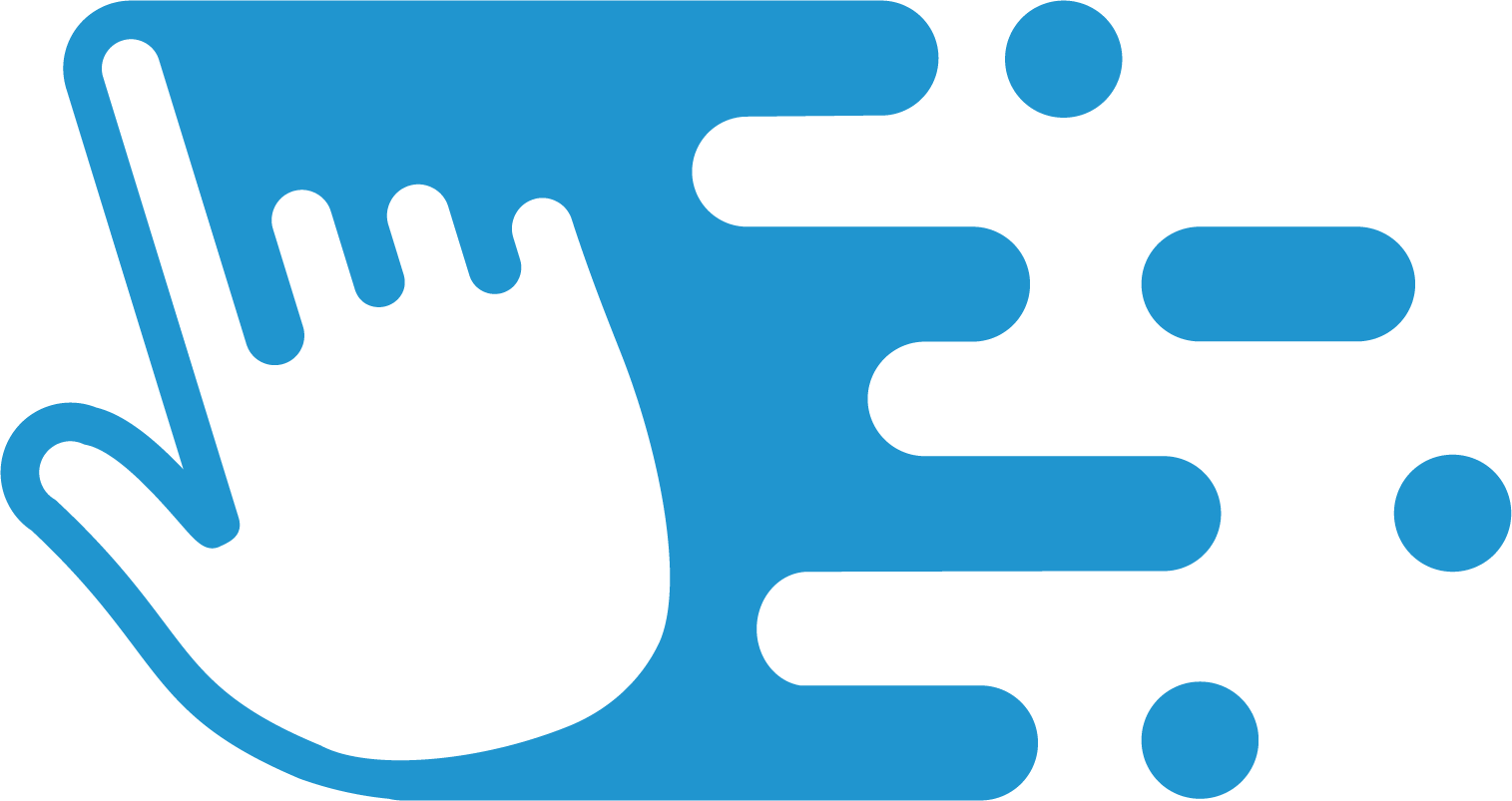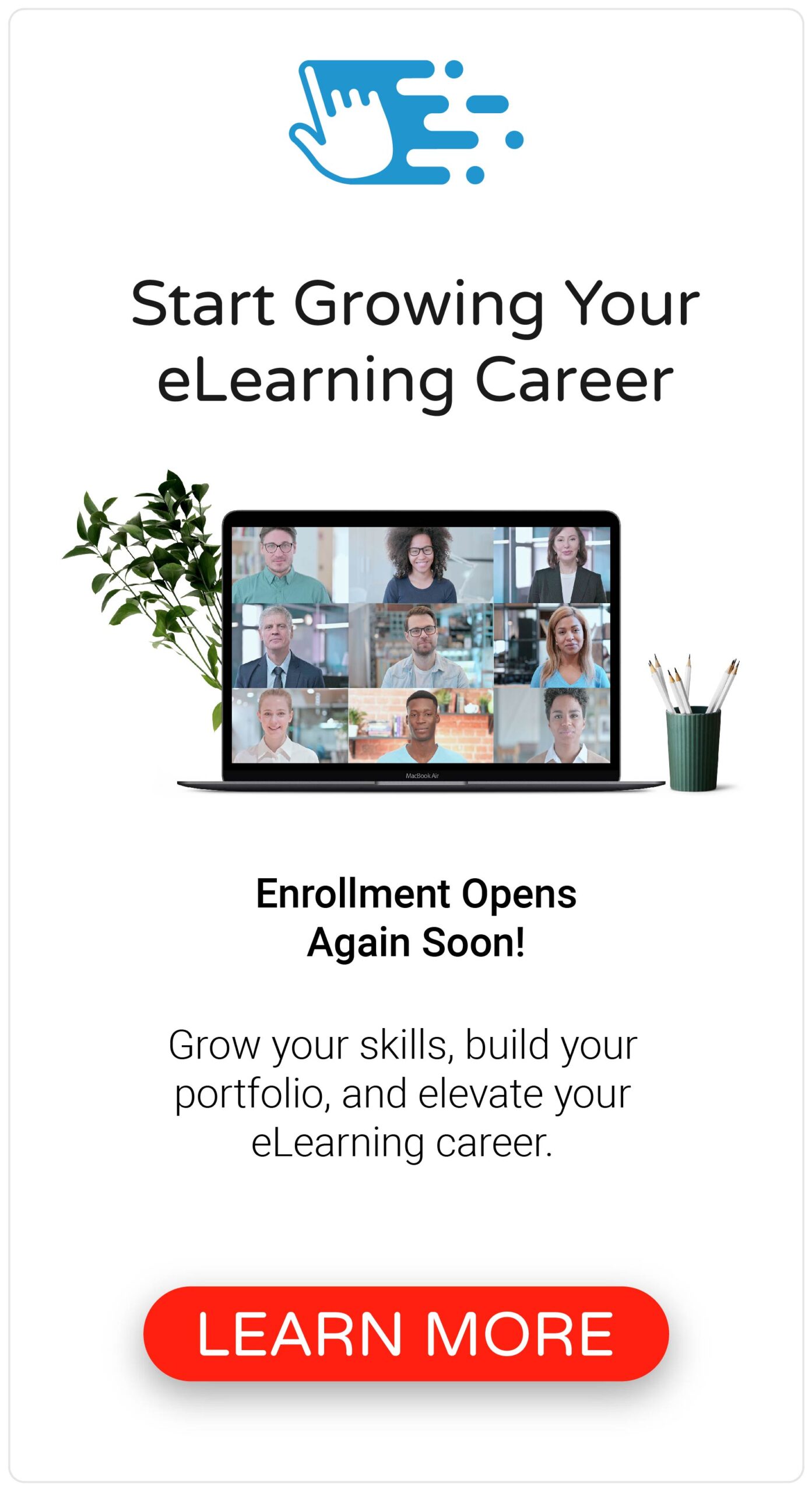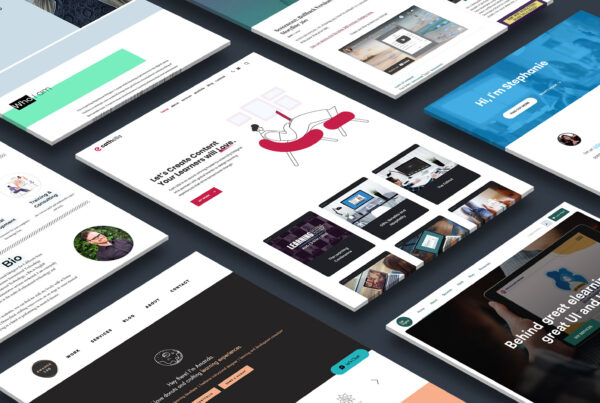If you’re a teacher looking to make the transition from teaching to eLearning design or instructional design, you’re not alone! According to the Alliance for Excellent Education, almost half a million U.S. teachers either move or leave the profession each year. And truthfully, it makes total sense! Teachers are notoriously underpaid and overworked—at least that’s how it is here in the United States.
In all of this, many teachers have turned their sights towards job opportunities in corporate organizations, specifically eLearning design and instructional design. However, with thousands crowding the job market, the journey is an uphill battle.
So, in this post, I’m sharing my top three tips for how teachers can successfully transition from teaching to eLearning design.
Focus on Building Skills

Attempting the leap from teaching to eLearning design can feel like trying to jump over the Grand Canyon. If you’re a teacher, you’ve spent years focusing on your credentials and education to land the ideal teaching job in a good school district. However, getting hired as an eLearning designer or an instructional designer in a corporate organization is a totally different challenge.
You see, in recent years, more and more organizations have started prioritizing tangible skills over credentials alone (i.e., years of experience, formal education, etc.). As a result, if you’re a teacher looking to transition into eLearning or instructional design, your first priority needs to be focused on building the skills corporate hiring managers are looking for in potential candidates.
Invest time learning the principles of instructional design, project management, storyboarding, visual design, and of course, eLearning development. The more you can focus on building your skills, the more you’ll become a desirable candidate.
Redefine Your Experience

The next challenge you’ll face if you’re looking to transition from teaching to eLearning design or instructional design is helping potential employers understanding how your skills as a teacher transfer to a corporate environment.
Right, wrong, or otherwise, there are a lot of misconceptions about what it is that teachers do day-in and day-out. And the onus is on you to help hiring managers see that you’re not just babysitting other people’s children while they make macaroni art all day. And yes, I know, it’s not fair, but it’s true.
So, what you need to do is focus on redefining how you describe your experience by using terms and phrases that translate to the corporate world. For example, replace “lesson planning” with “curriculum design.” Instead of saying “faculty meeting,” say “stakeholder meeting.” Rather than “grading assignments, say “evaluating learning.” You could even replace “teacher” with “facilitator” if you wanted to!
The truth is, these all the same thing; it’s just about appealing to the vernacular of someone who doesn’t work as a teacher.
Build Your Brand

My final tip for making the transition from teaching to eLearning design or instructional design is to focus on building your brand. If you want to be hired into a corporate eLearning or instructional design role, you need to “hang out” where other corporate learning professionals hang out.
This means having a complete LinkedIn profile, where you present yourself as what you want to be hired for. Are you actively working to build your eLearning skills? If so, then brand yourself as an “aspiring eLearning designer.”
Beyond that, if you’ve managed to build some eLearning examples, then take a look at the types of portfolios others are creating, get some inspiration, and create your own online portfolio to showcase your skills. This will provide potential employers living evidence of the skills they’re looking to hire for.
The Bottom Line
Making the transition from teaching to eLearning or instructional design can seem like an impossible challenge. However, if you focus on building and promoting your skills, you’ll discover that employers are more likely to take you seriously as a candidate.
What other tips do you have for teachers looking to transition from teaching to eLearning or instructional design? Share them by commenting below!









Along with building your skills and creating a portfolio, companies want to see you have have done the job. To gain some experience, consider doing some volunteer instructional design work. See if a small learning and development company can use some help, offer your services to a non-profit or reach out to a local chapter of ATD to see what volunteer opportunities are available. If you’re working full time, this is tough, but I’ve seen this work for others who have transitioned into instructional design.
Those are some great tips! Thanks for sharing, Erica!
I work in adult education and I have volunteered for my organization creating simple courses & training. I would suggest asking your own org or school or association if there are any projects you can work on. It has definitely given me opportunities to think strategically in ID that I haven’t as a teacher.
That’s a great tip! Thanks for sharing, Nadia!